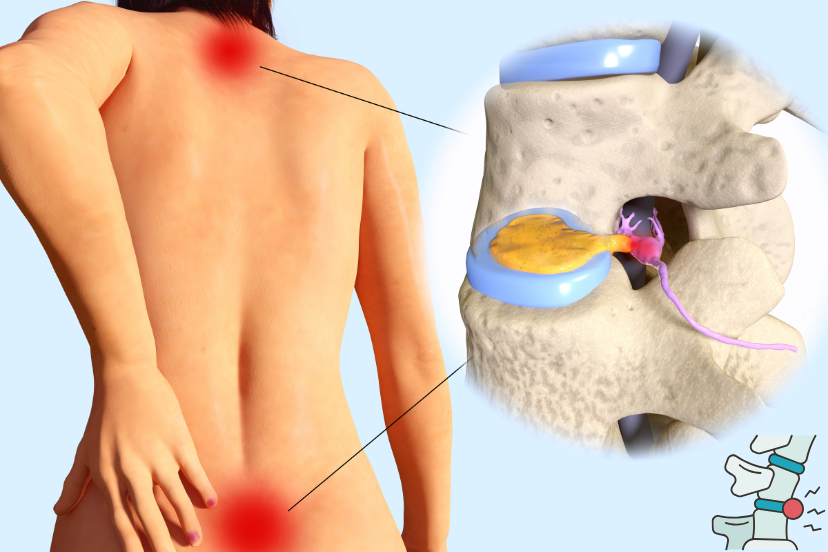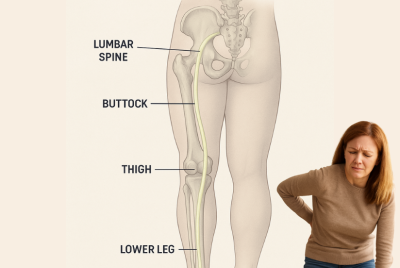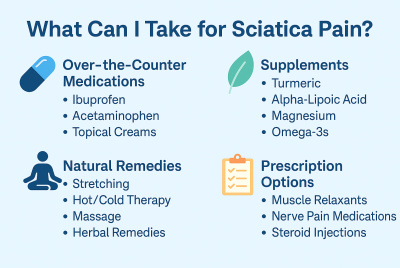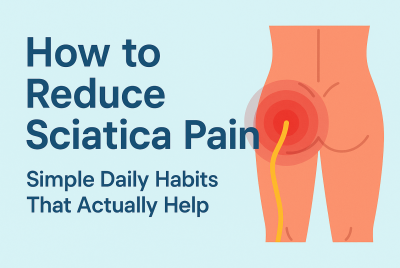Sciatica and Herniated Discs
Understanding Sciatica and Herniated Discs
Discover how sciatica and herniated discs are connected, explore symptoms, treatments, and tips to manage pain and prevent future issues. Let’s talk about a topic that affects so many of us—sciatica and herniated discs. If you’ve been feeling that sharp, shooting pain down your leg, chances are you’ve come across these terms. But what do they really mean? Let me walk you through it.
What Is Sciatica?
Sciatica isn’t a condition itself; it’s a symptom caused by irritation of the sciatic nerve. This nerve runs from your lower back down to your feet, and when it’s compressed or inflamed, you’ll know it.
Causes of Sciatica
Common culprits include herniated discs, spinal stenosis, or even muscle spasms. In some cases, sciatica can sneak up on you simply because you’ve been sitting too long in an awkward position.
Common Symptoms of Sciatica
You might feel pain radiating from your lower back to your legs, numbness, tingling, or even muscle weakness. Sound familiar? If yes, let’s dig deeper.
What Is a Herniated Disc?
Think of your spinal discs as jelly doughnuts—soft inside with a tougher exterior. A herniated disc occurs when that “jelly” pushes out, irritating nearby nerves.
How a Herniated Disc Develops
A herniated disc develops when the soft, gel-like center of a spinal disc pushes through its tough outer layer, often due to wear and tear, aging, or sudden injury. Repetitive strain, poor posture, or improper lifting of heavy objects can weaken the disc. This displacement can irritate nearby nerves, causing pain, numbness, or tingling, especially in the lower back and legs.
Connection Between Herniated Discs and Sciatica
Herniated discs are a common cause of sciatica, a condition resulting from irritation of the sciatic nerve. When the inner material of a herniated disc presses against this nerve, it triggers radiating pain, numbness, or tingling from the lower back to the legs. The severity of symptoms depends on the nerve’s compression, making timely diagnosis and treatment crucial for relieving pain and preventing further complications.
5 Best Sciatica Stretches for a Herniated Disc
Identifying the Symptoms and Diagnosing the Problem
Recognizing the Symptoms of a Herniated Disc
A herniated disc often causes sharp back pain that worsens with movement, radiating pain down the legs, numbness, or tingling. Muscle weakness in the affected area may also occur. Symptoms can range from mild discomfort to debilitating pain. If persistent pain or mobility issues arise, it’s essential to recognize these signs and consult a healthcare professional for evaluation.
When to Seek Medical Help
Seek medical help for sciatica or a herniated disc if you experience severe or worsening pain, numbness, or weakness in your legs. Immediate attention is crucial if you lose bladder or bowel control or if the pain prevents daily activities. Prompt diagnosis and treatment can prevent complications and help you regain comfort and mobility effectively.
Diagnosis Techniques for Sciatica and Herniated Discs
Diagnosing sciatica and herniated discs involves a combination of physical exams, medical history reviews, and imaging tests. During the physical exam, Doctors may check for reflexes, muscle strength, and pain triggers. Imaging techniques like MRI or CT scans provide detailed views of the spine to identify disc herniations or nerve compression. In some cases, X-rays may rule out other conditions. Accurate diagnosis is crucial for tailoring effective treatment plans to relieve symptoms and improve mobility.
Treatment Options for Sciatica and Herniated Discs
Non-Surgical Treatment Approaches
Physical Therapy and Exercises: Stretching and strengthening your back and core can work wonders.
Medications and Pain Management: Over-the-counter pain relievers or prescribed medications can help you manage flare-ups.
Cold and Heat Therapy: Alternating between cold packs and heat pads can reduce inflammation and relax tight muscles.
Exploring Alternative Therapies
Chiropractic Care: Gentle spinal adjustments may relieve pressure on nerves.
Acupuncture and Yoga: Both can help reduce pain and improve flexibility.
Surgical Interventions
Sometimes, surgery becomes the best option. Procedures like microdiscectomy can remove the offending part of the disc. Always weigh the risks and benefits with your doctor.
Lifestyle Adjustments to Prevent Sciatica and Herniated Discs
Ergonomics and Posture
Setting Up Your Workspace: Invest in a good chair and ensure your computer is at eye level.
Avoiding Prolonged Sitting or Lifting: Take breaks and lift with your legs, not your back.
The Importance of Regular Exercise
Strengthening Core Muscles: Your core is your spine’s best friend. Keep it strong.
Low-Impact Exercises to Try: Swimming and walking are excellent choices.
Living with Sciatica and Herniated Discs
Managing Chronic Pain
Chronic pain doesn’t have to control your life. Techniques like mindfulness or using a pain journal can make a difference.
Staying Positive and Seeking Support
Join a support group or talk to others who understand what you’re going through. Celebrate small victories, like a pain-free morning walk.
FAQs Related to Sciatica and Herniated Discs
Can a herniated disc heal on its own?
Yes, a herniated disc can heal on its own over time. With rest, physical therapy, and proper care, the body often absorbs the disc material, reducing pressure on nerves and alleviating symptoms naturally.
How do I know if my sciatica is serious?
Your sciatica is serious if you experience severe pain, muscle weakness, numbness, or loss of bladder or bowel control. These symptoms may indicate nerve damage and require immediate medical attention to prevent complications.
Are there any permanent cures for sciatica?
There is no permanent cure for sciatica, but symptoms can be managed through physical therapy, medications, lifestyle changes, and sometimes surgery. With proper care, many people experience long-term relief and improved quality of life.
Is walking good for sciatica?
Yes, walking is excellent for sciatica. It promotes circulation, strengthens muscles, and reduces inflammation. It’s a low-impact exercise that helps alleviate pain and improve flexibility, making it a safe and beneficial activity for sciatica sufferers.
What is the fastest way to relieve sciatica pain?
The fastest way to relieve sciatica pain is by using cold packs to reduce inflammation, followed by heat therapy to relax muscles. Gentle stretches and over-the-counter pain relievers can also provide quick, temporary relief.
How can I prevent a herniated disc from recurring?
To prevent a herniated disc from recurring, maintain good posture, avoid heavy lifting, strengthen your core muscles, and practice proper ergonomics. Regular exercise, stretching, and maintaining a healthy weight also help protect your spine.
Sciatica and Herniated Discs – Conclusion
Sciatica and herniated discs can significantly impact daily life, but understanding their connection is the first step toward effective relief. Whether caused by a herniated disc pressing on the sciatic nerve or other spinal issues, managing the condition requires a combination of medical care, lifestyle adjustments, and consistent self-care. From physical therapy and proper ergonomics to alternative therapies and, if needed, surgery, many options are available to address the pain and improve quality of life. Remember, small changes like maintaining good posture, staying active, and seeking support can make a big difference. Take control of your spinal health—relief is within reach!
Disclaimer
Please note that this article should not replace professional medical advice. Consult a healthcare professional for an accurate diagnosis and tailored treatment plan.

- Sciatica Pain Relief Techniques
- Cold Pack Therapy for Sciatica Pain
- Sciatica Relief for Office Workers





